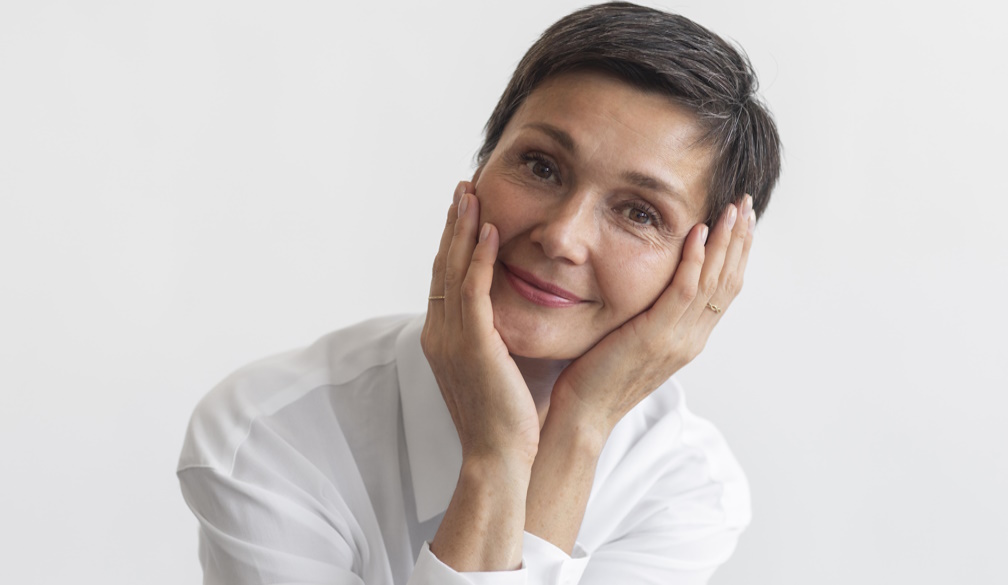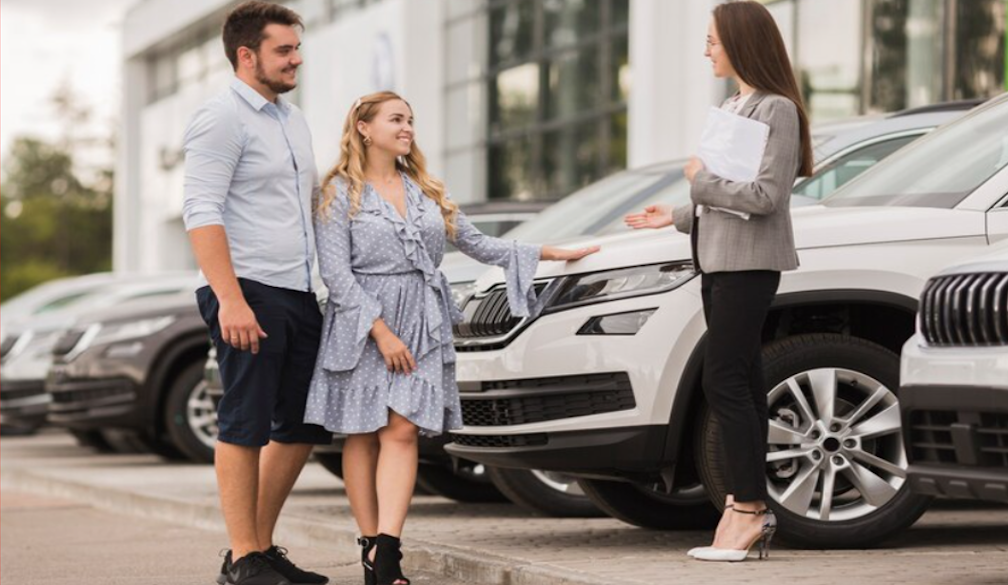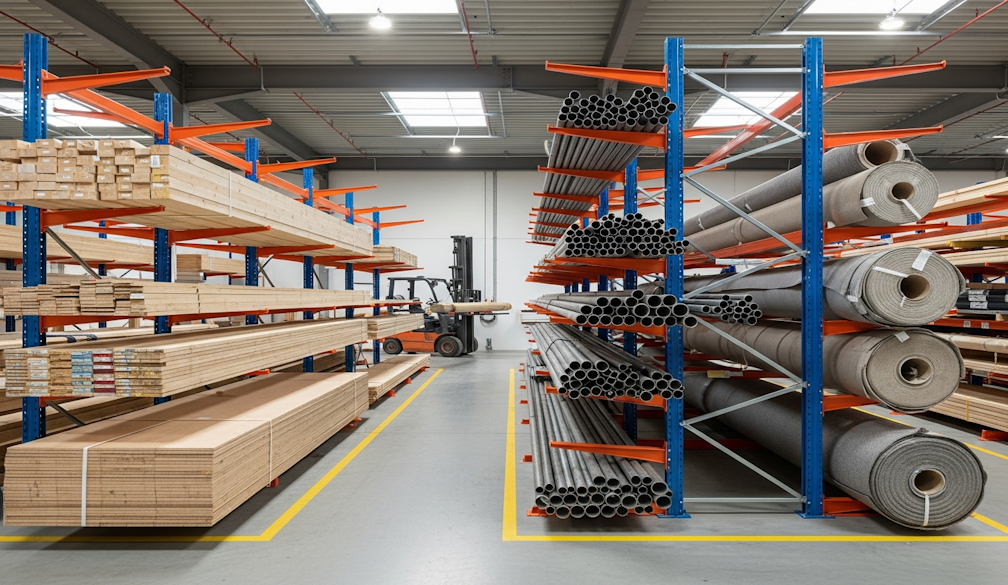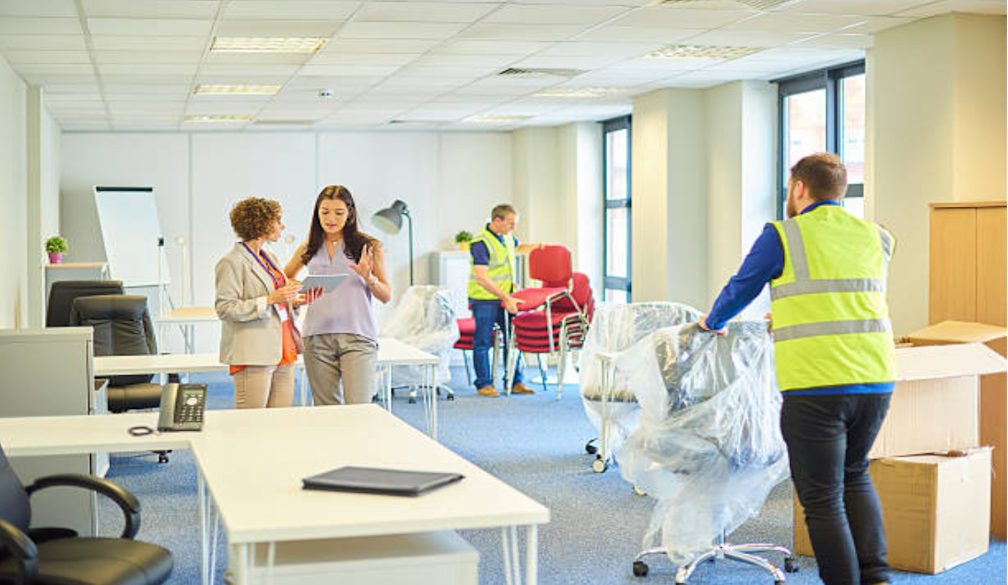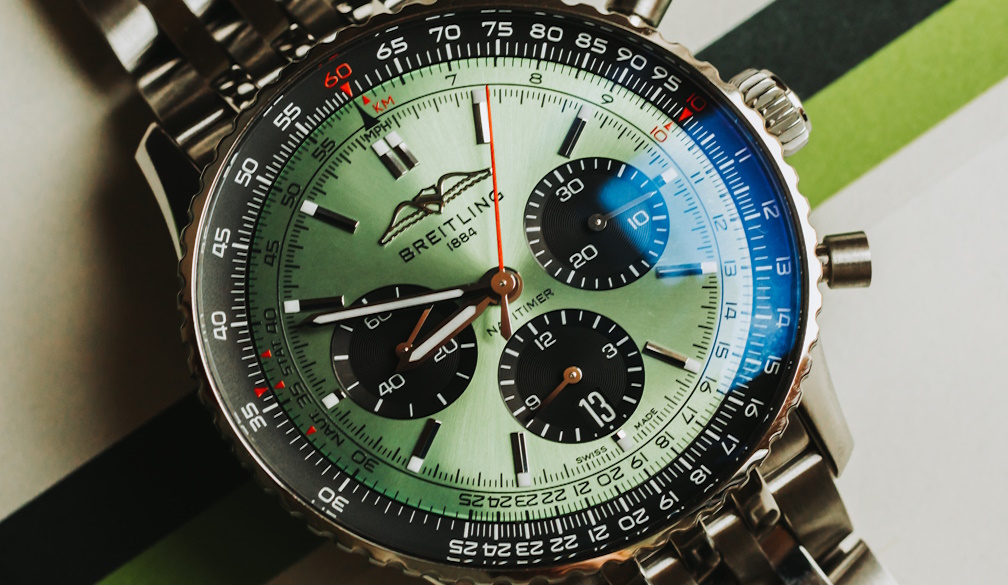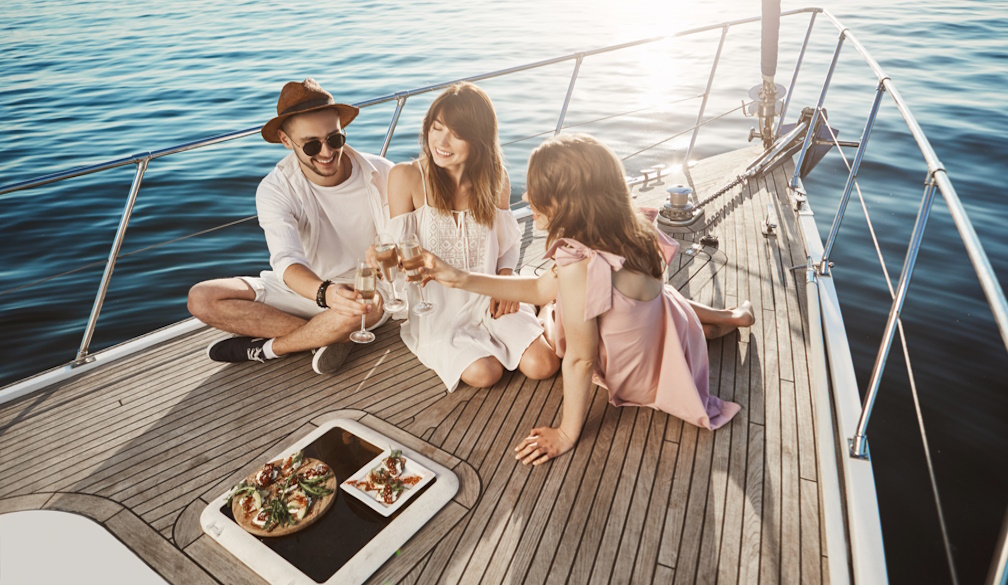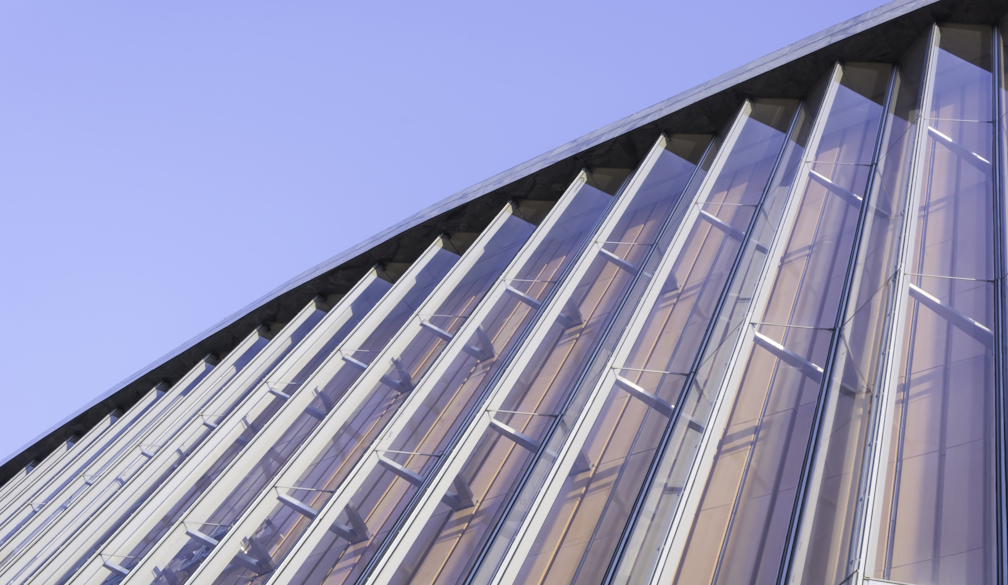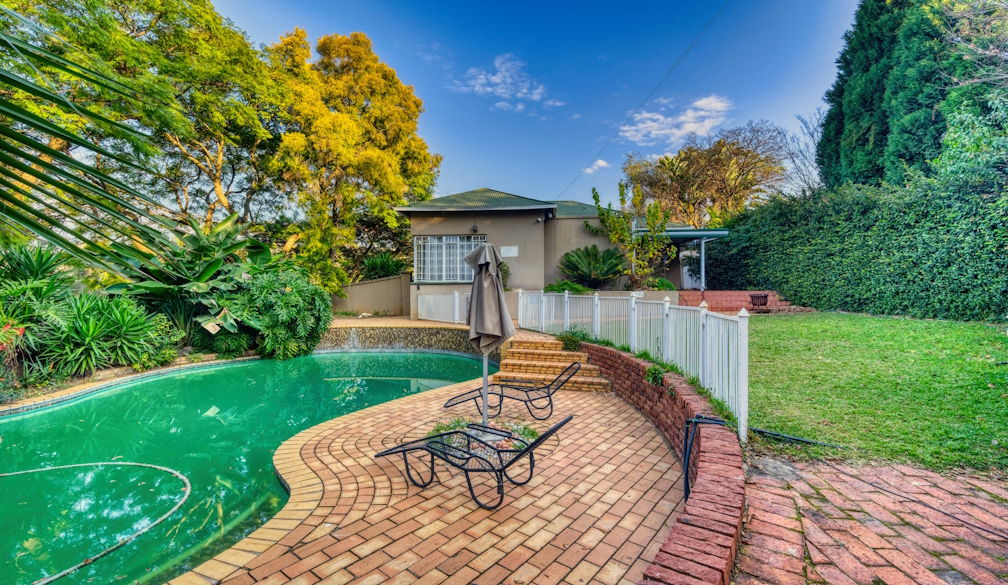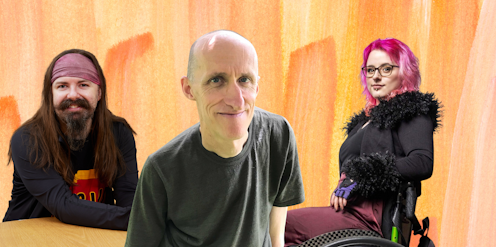
There are many reasons why I shouldn’t be here. If you’d shown my ten-year-old self my life as it is now, he’d have been stunned, mostly because he half-expected an early death. My father, who had Marfan Syndrome, the genetic condition I have, died when he was in his mid-40s, when I was two, and the conventional medical wisdom of the time was that this was normal, almost expected.
Marfan is known as a “disorder of connective tissue”, meaning numerous systems of the body can be affected – the connective tissue of the heart, joints, eyes are liable to strain or tear. In my teens, I had multiple spinal surgeries, but there was always the spectre of sudden aortic dissection: a potentially life-threatening tear in the aorta, the body’s largest blood vessel. Like walking around under a storm cloud, never knowing if or when the lightning would strike.
If you’d shown my 20-year-old self my life now, he’d have said, well, I’m not disabled, not really, I mean, I’m not disadvantaged by my body, there’d be other people who really are. At that age, I felt profoundly stigmatised, faltering under the weight of other people’s intrusive attention, a different kind of lightning, that kept striking.

Andy Jackson at kindergarten.
Andy Jackson
My sense back then was that disability was about impairment. They use wheelchairs. They’re blind or deaf. They’re intellectually disabled. Not me. I just had a differently shaped body, which was other people’s problem, not mine. As if I could keep those things discreet.
Back then, in the films, television dramas and books I consumed, there were disabled characters, invariably marginal or two-dimensionally pathetic or tragic. Their existence was functional, a resource to be mined. Their bodies were metaphorically monumental, looming over the narrative, yet somehow hollow, without the fullness of agency. I certainly didn’t know any disabled authors.
This is an edited extract of the Association for the Study of Australian Literature Patron’s Lecture, delivered at UniSA Creative’s Finding Australia’s Disabled Authors online symposium on Wednesday 25 September.
Becoming a writer within a community
My 35-year-old self would mostly be surprised at the distance I’ve travelled as a writer. From open mic poetry nights in Fitzroy and Brunswick, via publication in photocopied zines and established literary journals, onto my first book of poems (then more), grants, residencies, a PhD in disability poetics, the Prime Minister’s Literary Award for Poetry – and now teaching creative writing at the University of Melbourne.
These, of course, are only the outward markers. What’s most potent for me is the sense that, in spite of my ongoing sense of dislocation and marginality, I do belong within a net of support and meaning-making.
 Andy Jackson.
Andy Jackson.
I’m part of a community of poets and writers. A community of disabled people and people with disabilities, people who know chronic illness, the flux of mental health, who know what it’s like to be othered. I also live as a non-Indigenous person on Dja Dja Wurrung country, whose elders have cared for their land, kept culture alive, and resisted colonisation and its brutal extractions.
An awareness of where we are situated, a felt sense of relationship with others like and unlike us, a consciousness of the histories and political forces that shape us, a hunch that our woundedness is not separate from the woundedness of the entire biosphere: none of this just happens automatically, though it emerges from a very subtle inner resonance.
It has to be attended to, nurtured with curiosity and empathy, within a community. Because disability – as a socially-constructed reality, and as an identity that is claimed – is not essentially a category, but a centre of gravity every body is drawn towards.
This may not be the conception of disability you’re used to.
Disability as human experience
The social model of disability is the idea that what makes someone disabled are the social, political, medical, institutional, architectural and cultural forces and structures. Stairs (for people using wheelchairs) and stares (for those who look, or move, or talk in a non-normative way, where normal is a kind of Platonic abstraction of what humans ought to be).
But disability is also a fundamental aspect of human experience, with its own magnetism or impersonal charisma. Disability is an unavoidable bedrock of being alive.
 Andy Jackson in 1992.
Andy Jackson in 1992.
There is a tension here, of course. Between disability as a dimension of discrimination, which creates barriers we want to dismantle, and disability as an inherent aspect of an embodiment that is precarious, mortal and relational.
I am here because some of the barriers that impeded me have been, if not removed, then softened, weakened. Shame, stigma, an internalised sense of being less-than, abnormal, sub-normal: these things are being slowly eroded. Not, fundamentally, through any great effort on my part, but through the accumulated efforts and energies of communities that have gone before me, and that exist around me.
How can we best flourish?
In late 2021, the Health Transformation Lab at RMIT University announced their Writing the Future of Health Fellowship. The successful writer would be paid for six months to work on a project of their choice. The call for applications emphasised innovation, creativity and collaboration. It invited a Melbourne writer to address the question: what does the future of health look like?
 I proposed a collaboration: an anthology of poems, essays and hybrid pieces by disabled writers. It will be published next week, as Raging Grace: Australian Writers Speak Out on Disability.
I applied for the fellowship less than a year after the devastations of Australia’s Black Summer bushfires of 2019. Loss of lives, homes and livelihoods. Billions of animals dead or displaced. Smoke blanketed the sky and the trauma of it blanketed our lives. Then came COVID-19, which would kill millions worldwide. Its overwhelming burden was on poor and disabled bodies.
In Australia, 2020 was the year of lockdowns, social distancing and mask mandates, then vaccination, hope, resentment, disinformation, fear, fatigue. Quite quickly, it seems in retrospect, the talk was of “opening up”, “learning to live with it”. “The new normal” switched to “back to normal”. Everything felt scorched, fraught, ready to ignite again.
I proposed a collaboration: an anthology of poems, essays and hybrid pieces by disabled writers. It will be published next week, as Raging Grace: Australian Writers Speak Out on Disability.
I applied for the fellowship less than a year after the devastations of Australia’s Black Summer bushfires of 2019. Loss of lives, homes and livelihoods. Billions of animals dead or displaced. Smoke blanketed the sky and the trauma of it blanketed our lives. Then came COVID-19, which would kill millions worldwide. Its overwhelming burden was on poor and disabled bodies.
In Australia, 2020 was the year of lockdowns, social distancing and mask mandates, then vaccination, hope, resentment, disinformation, fear, fatigue. Quite quickly, it seems in retrospect, the talk was of “opening up”, “learning to live with it”. “The new normal” switched to “back to normal”. Everything felt scorched, fraught, ready to ignite again.
 In the wake of the 2019 bushfires and 2020 lockdowns, ‘everything felt scorched, fraught’.
Dan Peled/AAP
Those of us with experience of disability, neurodivergent people, those who live with chronic illness, depression, anxiety, trauma (I could go on) – we have unique and profound expertise on what health actually is, in the deepest sense, and what kind of environments allow us to survive and flourish.
The future of health, for all of us, I felt, depended on the health systems and the wider society being diagnosed by disabled people. It depended on us being integrally involved in imagining genuinely therapeutic futures.
‘An almost utopian daydream’
My fellowship pitch was an almost utopian daydream: collective empowerment and imagination in an era of crisis, precarity and isolation. What the project required was a community: diverse and open to each other.
I wanted a range of personal and bodily experiences, places of residence, cultural backgrounds, genders, sexualities and ages. In the end, a collective of 23 writers coalesced – poets, essayists, memoirists, thinkers, activists and community workers, but, above all, writers.
All of us in this project have first-hand experience of disability, neurodivergence, chronic pain and/or mental illness. The labels mean something, but we’re much larger than them. Men, women, non-binary folk; people of varying ages and cultural backgrounds, some First Nations, most not; queer, straight, cis, not; shy, vociferous, uncertain, confident, tired, in flux. People from many different corners of this continent.
In the wake of the 2019 bushfires and 2020 lockdowns, ‘everything felt scorched, fraught’.
Dan Peled/AAP
Those of us with experience of disability, neurodivergent people, those who live with chronic illness, depression, anxiety, trauma (I could go on) – we have unique and profound expertise on what health actually is, in the deepest sense, and what kind of environments allow us to survive and flourish.
The future of health, for all of us, I felt, depended on the health systems and the wider society being diagnosed by disabled people. It depended on us being integrally involved in imagining genuinely therapeutic futures.
‘An almost utopian daydream’
My fellowship pitch was an almost utopian daydream: collective empowerment and imagination in an era of crisis, precarity and isolation. What the project required was a community: diverse and open to each other.
I wanted a range of personal and bodily experiences, places of residence, cultural backgrounds, genders, sexualities and ages. In the end, a collective of 23 writers coalesced – poets, essayists, memoirists, thinkers, activists and community workers, but, above all, writers.
All of us in this project have first-hand experience of disability, neurodivergence, chronic pain and/or mental illness. The labels mean something, but we’re much larger than them. Men, women, non-binary folk; people of varying ages and cultural backgrounds, some First Nations, most not; queer, straight, cis, not; shy, vociferous, uncertain, confident, tired, in flux. People from many different corners of this continent.
 Some of the 23 writers who collaborated on Raging Grace. Clockwise, from top left: Bron Bateman, Robin M Eames, Beau Windon, Jasper Peach, Sarah Stivens, Michèle Saint-Yves.
Andy Jackson
Throughout 2022, we met in person and online. I called these meetings “workshops”. We looked at poems and essays together, thinking through the music and the bodily energies of the language. But these were really conversations: minimally guided, intensely honest and free-flowing conversations about what we have experienced, and what we know about how society creates and exacerbates disability.
We diagnosed the systems (health, bureaucratic, economic), and daydreamed utopian and practical therapeutic futures. In the process, across our diverse experiences, resonances and affinities sparked. Two people (or sometimes three or more) would begin to wonder what it might be like to write together with another particular person, around a certain theme or idea.
We wrote about the wild liberation of wheelchairs, the claustrophobia of shopping centres, the dehumanising tendencies of hospitals. We riffed on shame, ambivalence, love and sensitivity. We speculated about a future where consultancies run by people with autism and disability would help non-disabled people amplify their otherness, rather than the other way round. We interrogated the history and future of medical research. We thought together about racism, misogyny and eugenics. We sat beneath trees.
Some of the 23 writers who collaborated on Raging Grace. Clockwise, from top left: Bron Bateman, Robin M Eames, Beau Windon, Jasper Peach, Sarah Stivens, Michèle Saint-Yves.
Andy Jackson
Throughout 2022, we met in person and online. I called these meetings “workshops”. We looked at poems and essays together, thinking through the music and the bodily energies of the language. But these were really conversations: minimally guided, intensely honest and free-flowing conversations about what we have experienced, and what we know about how society creates and exacerbates disability.
We diagnosed the systems (health, bureaucratic, economic), and daydreamed utopian and practical therapeutic futures. In the process, across our diverse experiences, resonances and affinities sparked. Two people (or sometimes three or more) would begin to wonder what it might be like to write together with another particular person, around a certain theme or idea.
We wrote about the wild liberation of wheelchairs, the claustrophobia of shopping centres, the dehumanising tendencies of hospitals. We riffed on shame, ambivalence, love and sensitivity. We speculated about a future where consultancies run by people with autism and disability would help non-disabled people amplify their otherness, rather than the other way round. We interrogated the history and future of medical research. We thought together about racism, misogyny and eugenics. We sat beneath trees.
 ‘We wrote about the wild liberation of wheelchairs … we sat beneath trees.’
Elevate/Pexels
Sensitive listening and speaking
Every collaboration, for us, was a painstaking exercise in listening and speaking. This unpredictable, uncontrollable, expansive process determined both the process and the outcome. It was shaped by the energies each writer brought to the encounter, which were in turn shaped by preoccupations, traumas, aspirations, sensitivities, aesthetic inclinations and curiosities.
The most subtle, unforced collaborations sometimes resulted in poems in one coherent voice. The most intense, difficult collaborations sometimes led to two-column poems, with stark white space between them. This is as it should be. In any conversation, a burgeoning intimacy often makes our differences both more apparent, more significant, and yet also a little less obstructive.
I know my ache is not your pain, which isnot their suffering. Why do I think myself alone?
I am trying to quietenthis murmur in my bones,so I can listen.
– Gemma Mahadeo & Andy Jackson, from the poem Awry
In one collaboration, thinking of a spine that is not straight and a sexuality that is not straight, thinking of how we navigate public spaces differently and yet similarly, we each wrote a few lines of poetry each, until we had what felt like an entire poem. We then embarked on a process of editing, each time removing those elements of the piece that made it seem like two distinct voices. Our voices almost merged.
I extend my hand-cane hybrid towards the groundin front of me like a diviner – this path,this body, not the only crooked things…
We yearn for thepossibilities of another city, another body as wefall, knee-first onto the blunt fact
of queer promise.
– Bron Bateman & Andy Jackson from the poem Betrayal
In another collaboration, I was aware the other writer had experienced traumatic abuse, so I soon felt that when writing together – in a way that would not just be respectful but useful, for us both and for the poem – our voices would have to be distinct.
To dominate or erase another’s words, even with good intentions or under some pretence of “improving the poem”, would have been precipitous ground. The poem we ended up writing together was composed of two parallel voices, two wings. The air around them, and between us, held us up.
Assure child they are not at fault.
Refuse to be absolved of blame.
Find the subliminal rhymes.
Broken as open. Other as wisdom.
– Leah Robertson & Andy Jackson, from the poem Debris
Rigour and care
Each collaboration had its own particular questions and dilemmas. Each one required rigour and care, patience and courage. There were many awkward little stumbles and pauses. Yet the process was also profoundly liberating. It felt like someone had opened a window, so that a stifling room finally had air and outlook.
My sense, too, was that with the windows flung open, those outside our world could see in, might begin to more deeply appreciate the innumerable ways bodies are marginalised. That readers of all kinds would see their own predicaments connected to ours. Disability as one dimension of injustice, a dimension that reminds us of the ground we share, flesh and earth. Disability as gravitational force.
‘We wrote about the wild liberation of wheelchairs … we sat beneath trees.’
Elevate/Pexels
Sensitive listening and speaking
Every collaboration, for us, was a painstaking exercise in listening and speaking. This unpredictable, uncontrollable, expansive process determined both the process and the outcome. It was shaped by the energies each writer brought to the encounter, which were in turn shaped by preoccupations, traumas, aspirations, sensitivities, aesthetic inclinations and curiosities.
The most subtle, unforced collaborations sometimes resulted in poems in one coherent voice. The most intense, difficult collaborations sometimes led to two-column poems, with stark white space between them. This is as it should be. In any conversation, a burgeoning intimacy often makes our differences both more apparent, more significant, and yet also a little less obstructive.
I know my ache is not your pain, which isnot their suffering. Why do I think myself alone?
I am trying to quietenthis murmur in my bones,so I can listen.
– Gemma Mahadeo & Andy Jackson, from the poem Awry
In one collaboration, thinking of a spine that is not straight and a sexuality that is not straight, thinking of how we navigate public spaces differently and yet similarly, we each wrote a few lines of poetry each, until we had what felt like an entire poem. We then embarked on a process of editing, each time removing those elements of the piece that made it seem like two distinct voices. Our voices almost merged.
I extend my hand-cane hybrid towards the groundin front of me like a diviner – this path,this body, not the only crooked things…
We yearn for thepossibilities of another city, another body as wefall, knee-first onto the blunt fact
of queer promise.
– Bron Bateman & Andy Jackson from the poem Betrayal
In another collaboration, I was aware the other writer had experienced traumatic abuse, so I soon felt that when writing together – in a way that would not just be respectful but useful, for us both and for the poem – our voices would have to be distinct.
To dominate or erase another’s words, even with good intentions or under some pretence of “improving the poem”, would have been precipitous ground. The poem we ended up writing together was composed of two parallel voices, two wings. The air around them, and between us, held us up.
Assure child they are not at fault.
Refuse to be absolved of blame.
Find the subliminal rhymes.
Broken as open. Other as wisdom.
– Leah Robertson & Andy Jackson, from the poem Debris
Rigour and care
Each collaboration had its own particular questions and dilemmas. Each one required rigour and care, patience and courage. There were many awkward little stumbles and pauses. Yet the process was also profoundly liberating. It felt like someone had opened a window, so that a stifling room finally had air and outlook.
My sense, too, was that with the windows flung open, those outside our world could see in, might begin to more deeply appreciate the innumerable ways bodies are marginalised. That readers of all kinds would see their own predicaments connected to ours. Disability as one dimension of injustice, a dimension that reminds us of the ground we share, flesh and earth. Disability as gravitational force.
 ‘With the windows flung open, those outside our world could see in.’
Alistair Macrobert/Unsplash
There is something in the collective political and social atmosphere that suggests collaboration, working together, especially with people outside our usual circle, is either anathema or too difficult.
Think of any of the crises that are front of mind at the moment – the dialogue around the Voice referendum and the fallout from its defeat, the fraught process of ensuring a just transition away from fossil fuels, the long histories and cycles of war and revenge across the globe. You could even include your own intimate cul-de-sacs of unresolved conflict.
Corporate tech algorithms amplify our tribal attachments, assume and encourage our binarism, our quick, unthinking reactions. The blinkers are on, and are being tightened.
This is not, to state the obvious, desirable or in any way sustainable. Perhaps this is why, in the last five to ten years, there has been an increasing number of collaborative writing projects. Against the tide of hesitation and mistrust, a felt need to work together, within and across identities.
‘With the windows flung open, those outside our world could see in.’
Alistair Macrobert/Unsplash
There is something in the collective political and social atmosphere that suggests collaboration, working together, especially with people outside our usual circle, is either anathema or too difficult.
Think of any of the crises that are front of mind at the moment – the dialogue around the Voice referendum and the fallout from its defeat, the fraught process of ensuring a just transition away from fossil fuels, the long histories and cycles of war and revenge across the globe. You could even include your own intimate cul-de-sacs of unresolved conflict.
Corporate tech algorithms amplify our tribal attachments, assume and encourage our binarism, our quick, unthinking reactions. The blinkers are on, and are being tightened.
This is not, to state the obvious, desirable or in any way sustainable. Perhaps this is why, in the last five to ten years, there has been an increasing number of collaborative writing projects. Against the tide of hesitation and mistrust, a felt need to work together, within and across identities.
 I’m thinking of Woven, the anthology of collaborative poetry by First Nations writers from here and other lands, edited by Anne Marie Te Whiu. John Kinsella’s careful and ethical collaborative experiments with Charmaine Papertalk-Green, Kwame Dawes and Thurston Moore.
Then there’s Audrey Molloy and Anthony Lawrence’s intensely lyrical and sensitive conversation in Ordinary Time. And Ken Bolton and Peter Bakowski’s four recent collaborative books, which contain an array of darkly humorous fictional and fictionalised characters. This is only the poetic tip of the iceberg of recent collaborations.
Writers are one group of people who are tuning in to the need to go beyond the isolation or echo chambers. They know that the stories we are told – the need to be self-reliant and independent, the impetus to be suspicious of the other, or even that sense of inferiority that makes us feel disqualified from contributing – aren’t carved in stone. Or if they are, the persistent drip and flow of water can do its liberatory, erosive (and constructive) work.
We have, after all, only survived as a species and as communities through collaboration and mutual support.
Of course, we know there are countless collaborations currently being orchestrated by malicious agents: fascists, racists, misogynists, cynical corporate shills astroturfing against essential urgent climate action, even (to some degree) the reflexive social-media pile-ons. People are always working together in some way, deeply connected and inter-responsive. Collaboration in itself is not some utopian panacea.
Disabled collaboration
So I want to suggest that only a particular kind of collaboration can be properly transformative, humanising and grounding. It’s a collaboration of deep attentiveness and mutual exposure: a way of being together in which we set our certainties and fears aside, to be present to the other, to allow the other to be themselves, and to be open to the otherness in ourselves, an encounter which sensitises us to the complexities and bodiliness of injustice.
Let’s call it disabled collaboration.
Let me explain. As a disabled person, you are constrained, walled out of important social spaces: there are only steps into the workplace, the performance isn’t translated, or the shop is non-negotiable sensory overload. Even if you do manage to enter these spaces, it is made clear to you that you don’t really belong. They might stare at you, or signal their discomfort with silence or overcompensation. (And, yes, the shift to second-person is deliberate.)
Unless you give up – and which of us would not admit to giving up sometimes, or in some part of ourselves? – you spend a lot of energy proposing, asking, suggesting, pleading, demanding. You know what you need to be able to live a life of nourishment, connection, pleasure. You speak, in your own voice, out of your particular situation, from across the barriers.
Perhaps disability is really essentially about this giving voice. About constantly having to express what is unheard – or perhaps sometimes unhearable – by the broader society.
I’m thinking of Woven, the anthology of collaborative poetry by First Nations writers from here and other lands, edited by Anne Marie Te Whiu. John Kinsella’s careful and ethical collaborative experiments with Charmaine Papertalk-Green, Kwame Dawes and Thurston Moore.
Then there’s Audrey Molloy and Anthony Lawrence’s intensely lyrical and sensitive conversation in Ordinary Time. And Ken Bolton and Peter Bakowski’s four recent collaborative books, which contain an array of darkly humorous fictional and fictionalised characters. This is only the poetic tip of the iceberg of recent collaborations.
Writers are one group of people who are tuning in to the need to go beyond the isolation or echo chambers. They know that the stories we are told – the need to be self-reliant and independent, the impetus to be suspicious of the other, or even that sense of inferiority that makes us feel disqualified from contributing – aren’t carved in stone. Or if they are, the persistent drip and flow of water can do its liberatory, erosive (and constructive) work.
We have, after all, only survived as a species and as communities through collaboration and mutual support.
Of course, we know there are countless collaborations currently being orchestrated by malicious agents: fascists, racists, misogynists, cynical corporate shills astroturfing against essential urgent climate action, even (to some degree) the reflexive social-media pile-ons. People are always working together in some way, deeply connected and inter-responsive. Collaboration in itself is not some utopian panacea.
Disabled collaboration
So I want to suggest that only a particular kind of collaboration can be properly transformative, humanising and grounding. It’s a collaboration of deep attentiveness and mutual exposure: a way of being together in which we set our certainties and fears aside, to be present to the other, to allow the other to be themselves, and to be open to the otherness in ourselves, an encounter which sensitises us to the complexities and bodiliness of injustice.
Let’s call it disabled collaboration.
Let me explain. As a disabled person, you are constrained, walled out of important social spaces: there are only steps into the workplace, the performance isn’t translated, or the shop is non-negotiable sensory overload. Even if you do manage to enter these spaces, it is made clear to you that you don’t really belong. They might stare at you, or signal their discomfort with silence or overcompensation. (And, yes, the shift to second-person is deliberate.)
Unless you give up – and which of us would not admit to giving up sometimes, or in some part of ourselves? – you spend a lot of energy proposing, asking, suggesting, pleading, demanding. You know what you need to be able to live a life of nourishment, connection, pleasure. You speak, in your own voice, out of your particular situation, from across the barriers.
Perhaps disability is really essentially about this giving voice. About constantly having to express what is unheard – or perhaps sometimes unhearable – by the broader society.
 As a disabled person, ‘you spend a lot of energy proposing, asking, suggesting, pleading, demanding’.
Elevate/Pexels
This isn’t about transmitting thoughts or ideas. This is essentially a cry for connection, for help. For solidarity, allyship, change. What you’re after is collaboration: two or more people bringing their resources to bear upon a human situation, which may have fallen heavily on one person, but hovers over us all. Disabled people know this territory intimately. We regularly share much-needed information, resources, concern and time with each other.
This kind of collaboration, by definition, cannot assume an equality of voice, mode of operation or capacity. It is predicated on learning about difference and then responding to it: whether through listening, care work, protest or support.
This collaboration acknowledges and resists disadvantage, isolation and enforced voicelessness. It’s the kind of orientation towards another person that, I want to suggest, is exactly what might help us respond properly to the multiple, intersecting crises we find ourselves in.
It’s a listening not only to the concerns and experiences of the other, but an ambition to adapt to their particular way of expressing themselves.
To be clear, I’m not saying disabled people have any special talent for collaboration. We can be as bitter, isolationist, selfish or stubborn as any non-disabled person. In fact, there are aspects to being disabled that can encourage suspicion towards others, a scepticism that at times affords you the space to assess risk.
Can I trust this person with my needs, my life? It’s a caution that is understandable, and useful, but it can also keep us isolated. The cycle of othering depends on those othered doing some of the work, thinking this is all I deserve, or the perpetual doubtful thought of “maybe next time”.
On top of that, there are intersections of injustice that are particularly resistant. They don’t dissolve in the presence of collaboration, but require immense effort to shift.
In facilitating this project, I found that the most stubborn dividing factors were class and race. There are individualist, neoliberal dynamics at the core of funding guidelines and in our lives generally. Writing and publishing remain fields still dominated by white, middle-class connections and aesthetics.
When we sit down to write or work together, these things do not disappear. When writers are paid for their work, it does not mean the same thing for each person.
As a disabled person, ‘you spend a lot of energy proposing, asking, suggesting, pleading, demanding’.
Elevate/Pexels
This isn’t about transmitting thoughts or ideas. This is essentially a cry for connection, for help. For solidarity, allyship, change. What you’re after is collaboration: two or more people bringing their resources to bear upon a human situation, which may have fallen heavily on one person, but hovers over us all. Disabled people know this territory intimately. We regularly share much-needed information, resources, concern and time with each other.
This kind of collaboration, by definition, cannot assume an equality of voice, mode of operation or capacity. It is predicated on learning about difference and then responding to it: whether through listening, care work, protest or support.
This collaboration acknowledges and resists disadvantage, isolation and enforced voicelessness. It’s the kind of orientation towards another person that, I want to suggest, is exactly what might help us respond properly to the multiple, intersecting crises we find ourselves in.
It’s a listening not only to the concerns and experiences of the other, but an ambition to adapt to their particular way of expressing themselves.
To be clear, I’m not saying disabled people have any special talent for collaboration. We can be as bitter, isolationist, selfish or stubborn as any non-disabled person. In fact, there are aspects to being disabled that can encourage suspicion towards others, a scepticism that at times affords you the space to assess risk.
Can I trust this person with my needs, my life? It’s a caution that is understandable, and useful, but it can also keep us isolated. The cycle of othering depends on those othered doing some of the work, thinking this is all I deserve, or the perpetual doubtful thought of “maybe next time”.
On top of that, there are intersections of injustice that are particularly resistant. They don’t dissolve in the presence of collaboration, but require immense effort to shift.
In facilitating this project, I found that the most stubborn dividing factors were class and race. There are individualist, neoliberal dynamics at the core of funding guidelines and in our lives generally. Writing and publishing remain fields still dominated by white, middle-class connections and aesthetics.
When we sit down to write or work together, these things do not disappear. When writers are paid for their work, it does not mean the same thing for each person.
 When we sit down to write or work together, things like class and race do not disappear.
Armin Rimoldi/Pexels
Throughout this project, I have asked myself a number of questions. How do I, as a funding recipient, ensure that my collaborators are not exploited or taken for granted? What assumptions do I carry, invisibly, about the merits of particular voices? Should I step back to give more space to Indigenous writers, culturally and linguistically diverse writers, queer writers? How do we speak together within a poem or essay in a way that reaffirms common cause without diminishing the very real differences?
These difficult questions have not been resolved. Still, their intractability really only reinforces my wider point. We need to engage together in a way that is predicated on difference, exposure, vulnerability and mutual support. If disability is the imprint or shadow of bodily injustice, then collaborating in a disabled way, consciously, can radically expand our understanding of our shared predicament.
What happens within the process of disabled collaboration is akin to the words in Sarah Stivens and Jasper Peach’s poem, Crack & Burn:
Different bodieswith the same fears, different aches with the same storiesOur brains tell us that we’re alone, but we know not to believe them…
When we gather in numbers it’s impossible to feel less than because all I see
– everywhere I look – is raging grace and powerful repose.
The experience foreshadows, in a small but potent way, the future we wish to live in.
What might disabled collaboration achieve? The poem Coalescent, written by Beau Windon, myself, Michèle Saint-Yves, Robin M Eames and Ruby Hillsmith, suggests a hopeful answer:
overturningthe old regime of normalcy for somethingstrange / / something glorious / / something new
Authors: Andy Jackson, Creative Writing Lecturer, The University of Melbourne
When we sit down to write or work together, things like class and race do not disappear.
Armin Rimoldi/Pexels
Throughout this project, I have asked myself a number of questions. How do I, as a funding recipient, ensure that my collaborators are not exploited or taken for granted? What assumptions do I carry, invisibly, about the merits of particular voices? Should I step back to give more space to Indigenous writers, culturally and linguistically diverse writers, queer writers? How do we speak together within a poem or essay in a way that reaffirms common cause without diminishing the very real differences?
These difficult questions have not been resolved. Still, their intractability really only reinforces my wider point. We need to engage together in a way that is predicated on difference, exposure, vulnerability and mutual support. If disability is the imprint or shadow of bodily injustice, then collaborating in a disabled way, consciously, can radically expand our understanding of our shared predicament.
What happens within the process of disabled collaboration is akin to the words in Sarah Stivens and Jasper Peach’s poem, Crack & Burn:
Different bodieswith the same fears, different aches with the same storiesOur brains tell us that we’re alone, but we know not to believe them…
When we gather in numbers it’s impossible to feel less than because all I see
– everywhere I look – is raging grace and powerful repose.
The experience foreshadows, in a small but potent way, the future we wish to live in.
What might disabled collaboration achieve? The poem Coalescent, written by Beau Windon, myself, Michèle Saint-Yves, Robin M Eames and Ruby Hillsmith, suggests a hopeful answer:
overturningthe old regime of normalcy for somethingstrange / / something glorious / / something new
Authors: Andy Jackson, Creative Writing Lecturer, The University of MelbourneRead more



